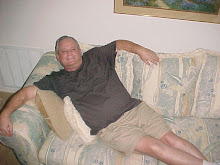At the start of each quarter, the NYSE sets three circuit breaker levels at levels of 10%, 20%, and 30% of the average closing price of the Dow Jones Industrial Average for the month preceding the start of the quarter, rounded to the nearest 50-point interval. As of the fourth quarter of 2012, these levels are 1,350 points, 2,700 points, and 4,050 points respectively. Depending on the point drop that happens and the time of day when it happens, different actions occur automatically. A one hour halt is triggered at 10%, two hour halt at 20%, and market closes at 30%.
Trading halts usually occur when a publicly traded company is going to release significant news about itself. The halt in trading for the affected security gives investors time to review the news and assess its impact. Another situation in which a trading halt might occur is when the exchange is uncertain "whether the security continues to meet the market’s listing standards."
Also, there are "trading pauses", which are defined as, under NASDAQ, "if a security is subject to a Trading Pause, the Pause Threshold Price field will contain the reference threshold price that deviates 10% from a print on the Consolidated Tape that is last sale eligible as compared to every print in that security on a rolling five (5) minute basis".



No comments:
Post a Comment